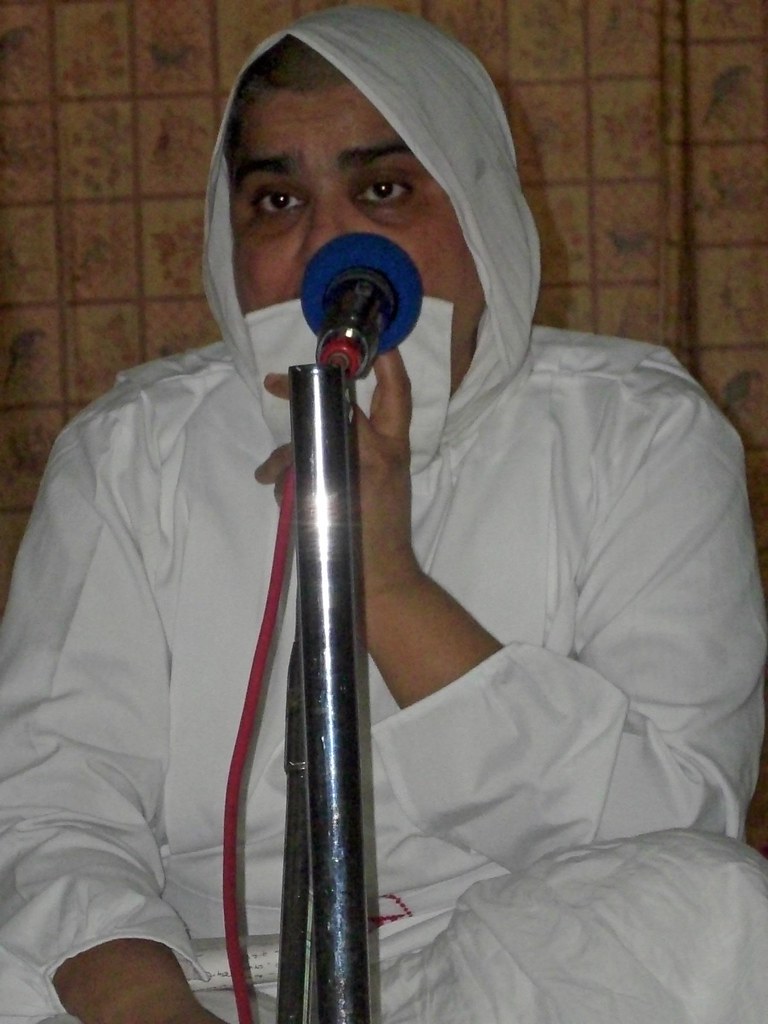
JAP - Chanting of Mantra
Sixth day of paryushan parva is celebrated as “जप ”. On the eve of “Jap Diwas” Samani Bhavit Pragya ji on 22nd August, 2009 at Amolak Bhawan, Raipur said that Jap, the word originates from Sanskrit which means uttering a phrase of words in a low voice or repeating it internally. In religious terms it refers to the spiritual discipline involving the meditative repetition of a mantra or name of God.
A mantra is a sound, syllable, word, or group of words that are considered capable of "creating transformation" (cf. spiritual transformation)1. Jap can be done in three ways i.e.
- Verbal repetition in form of chanting
- Mutter repetitions
- Internal Mental repetitions
There are also known as three stages of mantra repetition. At initial stage the mantra is being pronounced verbally aloud with clarity of voice. If such repetitions occur with intonation and concentration, it can alter the frame of mind, behavior and attitude. Once you get habitual of attaining positive frame of mind through verbal recitations, the next stage is of whispering the mantras. This will have more impact on your spiritual mind. Silent repetitions of mantra relates to internal mental pronunciation. This stage can be achieved through continuous practice and meditation.
Mantra is a collection of mystic sound, radiant sound and sacred words. The literal meaning of mantra is the force which protects a person from the evil forces, suffering and miseries. All elements and energies in the Cosmos can be influenced and guided by Mantras. There are four types of Mantras:
- Prayer
The Prayer is a way of communing with God.
- Guru mantra
The Guru Mantra is the first initiation given by the Guru, the Master to the disciple on the spiritual path. It anchors us in God, Dev, Dev and Dharma.
- Bija Mantra
Bija mantra represents the essence of the Guru Mantra. It is the vibration and the "call" of the soul. Its effects develop more readily in deep meditation. As it works at the astral level it guides and influences the course of our destiny.
- Maha Mantra
The mantras from which more mantras can be derived they are called Maha Mantr
In Jainism, Namaskar Mantra is identified as “Maha-mantra”. The letters from Mahamantra ‘ Aa, Ma, Ha, Ra and Sa” can be used to form more mantras. This mantra is an extraordinary mantra which contains a humble bow down to all spiritual powers. It is the fundamental prayer in Jainism which can be recited at any time of the day. While praying by reciting this mantra, we bows with respect to Arihantas, Siddhas, Spiritual Leaders (Acharyas), Teachers (Upadyayas) and all the monks. The mantra worships the virtues of all the supreme spiritual people instead of just worshipping one particular person. It is important to note that the Navkar Mantra does not mention the names of even Tirthankaras and Siddhas. At the time of recitation, we remember the virtues related to each spiritual soul and try to emulate them.
Benefits of Chanting of Mantra:
Mantra is the essence of various spiritual powers. Various benefits that can be derived from practicing regular chanting of mantras are
- It helps strengthening our strengths
- It helps curing our sickness relating to our mind, soul and body
- It helps building “aura” and magnifies it.
- It improves our inner power and concentration
- It also helps in managing our enormous emotions and controls the devil thoughts etc
How to do Chanting of Mantras
It is very important how one practice the mantra chanting. The methodology applied to do repetitions accelerates the benefits deriving from chanting. It is also very important that the chanting should be done at the same time every day to have the powers of ritual. There are many ways a person can adopt to do chanting. Few of them are:
Chanting combined with Pranayam:
In this method the Sadhak (the person who practice meditation and/or Chanting) do chanting of mantra with breathing. He used to recite each phrase/line of Mantra while breathing in and next phrase while breathing out. This continues for the entire duration of chanting. This way helps the person to control his emotion, develop positive attitude and feeling of immense pleasure.
Chanting combined with meditation:
In this method the Sadhak do chanting of mantra concentrating on different spiritual focal points in the body e.g. he recites “Om Namo Arihantanam” and concentrates his all living senses on his Shanti Kendra i.e. the centre point of head. This empowers the inner strength and creates a shield around the person to protect them from the anguish, agony and evil forces. It suppresses misfortune caused due to planetary position and saves the meditator from worries and hurdles of life. It involves purity of soul and enhances well-being, happiness and awareness of life. It leads to ecstatic blissful life. According to Sadhvi Rajimati ji, we can practice in the following manner:
Phrases of Namokar Mantra
Focal Point of Body
Kendra
Namo Arihantânam
Center Point of Head
Shanti Kendra
Namo Siddhânam
Between both Eyebrows
Darshan Kendra
Namo Âyariyânam
Centre of Neck
Vishudhi Kendra
Namo Uvajjhâyanam
Centre of Heart
Anand Kendra
Namo Loe Savva Sahûnam
Navel
Tejus Kendra
Chanting of mantra has an incredible force and destroys all sins. It is foremost in all that is auspicious with regard to physical, mental, emotional and spiritual matters. The vibrations of the mantra produce electrical currents, which provide wonderful results and achieve miraculous success in every field of life.
The Jap is also very helpful for awakening inner energy and developing will power. The Jap pacifies the feeling, improved the capacity for knowledge and purifies the mind. Jap also develops super consciousness. Real happiness comes through from the inner world. It constitutes a shield which obstructs external influences from entering the body.
To pacify the ill effects of the planets, chant the following Maha-mantra while visualizing the associates colour.
PLANETS
MANTRA
COLOUR
The Moon and Venus
Om Hrim Namo Aranthanam
White
The Sun and Mars
Om Hrim Namo Siddhanam
Red (Rising sun)
Jupiter
Om Hrim Namo Aayriyanam
Yellow
Mercury
Om Hariom Namo Uvajjhayanam
Green
Saturn, Rahu, Ketu
Om Hrim Namo loe
Dark blue
In conclusion, everybody should practice chanting of mantra at the same time everyday to enhance purity, tranquility and concentration and lead their life towards immense pleasure and happiness.
 Ritu S. Jain
Ritu S. Jain